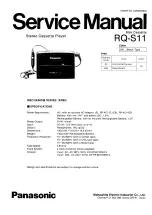
COMPONENT MAINTENANCE MANUAL
AVIATION PRODUCTS
Model FA5000
Rev. 02 Page 17
July 21/17
Description and Operation
23–70
−
30
Use or disclosure of information on this sheet is subject to
the restrictions on the cover page of this document.
E.
BITE Task
The BITE task is used to monitor the proper operation of the recorder as defined by the
EUROCAE MOPS ED-112 document. It is responsible of keeping track of the current sta-
tus of the recorder and managing the fault log.
Each task running on the recorder will be able to log faults in the fault log. The Fault log is
stored on NVRAM (EEPROM) on the recorder. Each task that is capable of generating
faults will connect to the BITE task via the message queues. The message queue will be
system-wide, meaning that all tasks will write the fault information to this single queue. By
doing this, each fault message is sent to the BITE task in its entirety and will not be inter-
rupted by other tasks writing fault messages at the same time (i.e. there will be no in-
ter-task resource locking issues). The BITE task will write the fault code as it is received.
Each task that wants to log a fault will call a common routine to format the fault informa-
tion in a standard way. Each fault will contain a time tag of when the fault took place. See
Figure 10
−
BITE Task Data Flow Diagram.
Get
Faults
{
Task
Faults
Process
Faults
Fault
Log in NVRAM
Fault Discrete Outputs
Real
−
time Health
and Status Info to
GSE Interface Task
Figure 10.
BITE Task Data Flow Diagram
The BITE task is responsible for processing the “Push to Test” discrete and the “Voice
Erase” discrete that are on a CVR . For the “Push to Test” discrete, the BITE task will veri-
fy that the discrete has been active for at least 0.25 seconds and if so, will start the audio
testing of all four audio channels. Note that the actual processing of the audio test data is
performed by the CVR task. A Goertzel algorithm is run to test for the presence of the 640
hertz test tone. If the internal RIPS is present, the RIPS’s test line will be activated. Once
activated, the fault line and the RS-232 output of the RIPS will be monitored to detect the
presence of a faulty RIPS unit.
For the “Voice Erase” discrete, the BITE task will verify that the discrete has been active
for at least two seconds before continuing. The erase must be deactivated after the 2 sec-
onds to commence an erase. This process avoids erase if the button is stuck as well as
continuous erase if the button is erased.
The document reference is online, please check the correspondence between the online documentation and the printed version.
















































